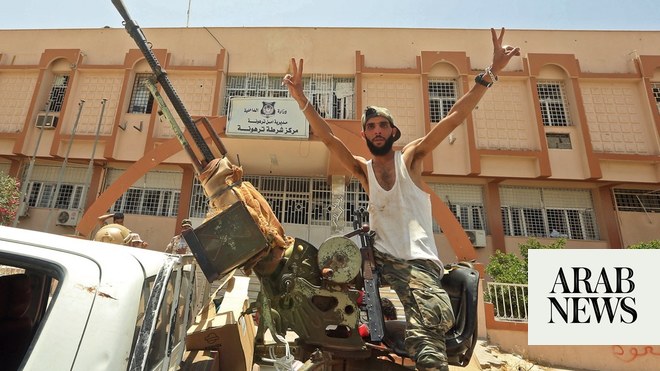
Almost a month before 15th of May, the day parliamentary elections will be held, Lebanon appears to face its most dangerous juncture. These elections will either take the country towards consolidating the Iranian mullah regime’s hegemony or, despite difficulties, it will put the country on a path of recovery. This is if the parliamentary elections are seen as a crucial turning point in which the solidarity of the Lebanese people can curtail the trend of the Lebanese state being hijacked, and restore the state and its sovereign decision.
It is useful to note that April 13 this year marked exactly 47 years since the start of the Civil War. The Lebanese remember this date well, but there is no consensus on the date that civil strife ended because, with each moment of domestic turmoil, the fragility of civil peace becomes clearly evident. This is despite our vivid memory of the war which wrought 150,000 lives, left about 20,000 disabled and 20,000 missing with fates unknown, and brought about forced demographic change that affected a quarter of the Lebanese people and displaced abroad a third of the population. All positions converge on the fact that the roots of that conflict can be traced back to the Cairo Agreement of 1969, when Parliament legislated the official renunciation of Lebanese sovereignty, with the only objection coming from Raymond Eddé!
As a reminder, the period of defective civil peace began in the fall of 1990, when the political class cloned from the pre-war parliaments united with those who until then were behind barricades, and with the addition of a class of financial mafiosos. At the time, these hid behind the strength of the occupying military of the Syrian regime and fabricated an amnesty law for their war crimes, and as such, they carried out a political coup that served as the introduction to the confessional system in partnership with the Syrian regime. The most prominent feature of the stage was the obstruction of implementing the constitution, while the implementation of legislation was also conducted in a discretionary manner.
The corruption spread, nepotism and clientelism prevailed, liberties were violated, and there emerged a “stock exchange” to buy and sell parliamentary and ministerial positions, competencies were discarded, and new “concepts” were invented to cover up the real aims of the Syrian regime. These included empty slogans such as “One people in two countries,” and “what is between Syria and Lebanon was not man-made!” The country returned to being a platform for the emigration of young people and talents, as the financial boom of the time was artificial and the scope of poverty expanded, with remittances covering some of the country’s needs.
Nearly a decade ago, more and more people began yearning for the dark years of war, during which not a single citizen found themselves without any way out and self-immolated after being destroyed by destitution, as George Zureik did in early 2019, several months before the “October Revolution,” an act that was repeated several times after the revolution in rejection of the current state of humiliation!
The “Independence Uprising” of 2005 had succeeded in expelling the Syrian regime’s military from Lebanon by taking advantage of international conditions. However, those who controlled that uprising soon came to fear their own people, and thus leapt towards a quadripartite agreement with Hezbollah to renew the state’s sharing of spoils. Only after that, sometime between Doha 2008 and the "black shirts" government of 2011, the Lebanese state metastasized as an agent of the Iranian regimes hegemony. The same faces would return, or be reproduced, in government seats, but the main constant was the persistent inefficiency, subordination, and dependency all of which were entrenched. These parliaments, with their marginal position, formed a political umbrella for a banking-political cartel, but one of “resistance,” which achieved astronomical profits resulting from looting the state’s resources as ministries turned into “Ali Baba’s cave” then, when the proverbial teat of the state had been milked dry, bank deposits were then robbed. As such, they accumulated large sums of illegal profit, provided funding for their mini-states, a parallel economy boomed, unemployment was exacerbated and poverty figures increased!
After 32 years of this deficient civil peace, and after the political class handed over its leadership to Hezbollah in 2016, the system of plundering accelerated the wear and tear, and successive collapses engulfed the Lebanese people who, in a blink of an eye, moved from affluence and prosperity to hardship and beggary. The authoritarians were horrified by what the October 17 Revolution crystallized in terms of the possibility of reconciliation bringing consensus among those suffering in the face of their oppressors. The response was to invest in hatred and sectarian grudge, the primary weapon of survival for the sectarian system, and the state continued to be a weak and fragile structure, in response to the cup that overflowed on October 17.
The political elites of Lebanon were not given pause by the balance of payments deficit that started in 2011, and the performance of official institutions did not change. They claimed that the so-called “compromise” of 2016, which handed the country over to Hezbollah by electing its candidate as president, would lead to stability, achieve economic recovery, and restore prosperity. Lebanon lost stability and prosperity when Hezbollah plunged it into its wars against other countries of the region, acting on behalf of the Iranian Revolutionary Guard Corps. As such, and with the militia’s hegemony, Lebanon was turned into a platform of aggression against Gulf states, and for exporting narcotic poisons deliberately targeting Gulf societies. The belated awakening of “sovereignty” by some does not absolve them of responsibility for policies that have led to Lebanon’s subjugation by the “axis of resistance,” or the repercussions that this had left.
Today, as parliamentary elections draw near, and after the presidential elections next fall, the conflict between two axes has taken shape: One represented by October 17 and another by the system of sectarian alliances, i.e. the bloc responsible for the crime of Beirut Port Blast on August 4, 2020, on one hand, and the popular uprising that followed the crime, to unite those scarred by it, treat their wounds, and insist on accountability and making the perpetrators pay the price for their crimes. This is the context in which the electoral battle is taking place, and only the October 17 project to restore the state is the opposite of the mini-state project and the dangers it poses to the Lebanese state as an entity, and to its people!
Away from the organized media campaigns to accept that Hezbollah and its bloc will likely win the parliamentary majority, and even increase it from 72 to 75 MPs, their real goals seem to be securing a two-thirds majority in Parliament, and undertaking a move that is even more dangerous than what the parliament did in 1969 when it relinquished Lebanon’s sovereignty! Today, after making constitutional amendments and legitimizing its militias, these moves would enable the party to consolidate its control and turn into a parallel Lebanese army. However, Hezbollah’s rosy expectations were undermined as the forces of change dared to confront it in its so-called “strongholds,” and today’s instability could lead to tomorrow’s positive change, following a political recovery of the Sunni community after its frustration with the performance of Saad Hariri that served only Hezbollah’s grinder!
This is not to underestimate the power of Hezbollah which, in the 2018 elections, secured nearly 265,000 votes and expanded its base by about 20,000 votes, but enough intimidation. Hezbollah is apprehensive and afraid of the consequences of the policies it has imposed which have widened the scope of poverty even in its own “strongholds.” This party has resorted to intimidation, incitement, and bribery, as the Lebanese Association for Democratic Elections (LADE) revealed the extent to which Hezbollah relies on bribery through campaigns to “combat unemployment,” “build homes” and “marriages for the poverty-stricken,” campaigns which have so far affected 93,000 people, in addition to its allocation of $18 million and 18 billion Lebanese pounds as “livelihood assistance that reaches 215,000 families!” Despite all, Hezbollah remains strong and capable, but its stakes are high and placed on a wide range of bribes, while there are valid statistics that suggest a decline of Hezbollah’s base of support by about 30%. The protest vote in favor of the forces of change is an opportunity to enable the October Revolution to begin formulating a political alternative to restore the country, and it is certain that the new forces of change will not lose their way.








